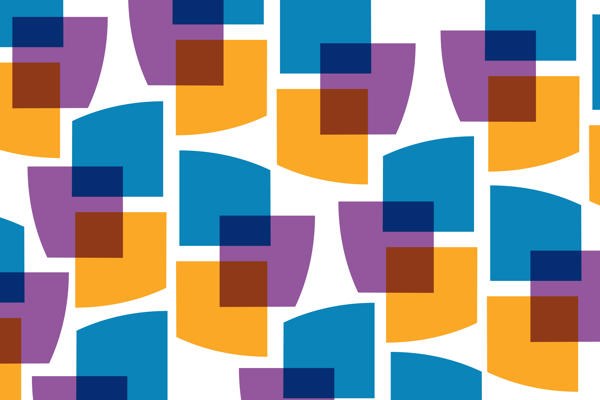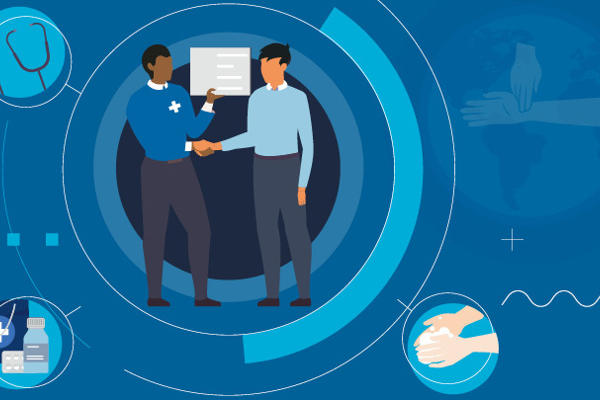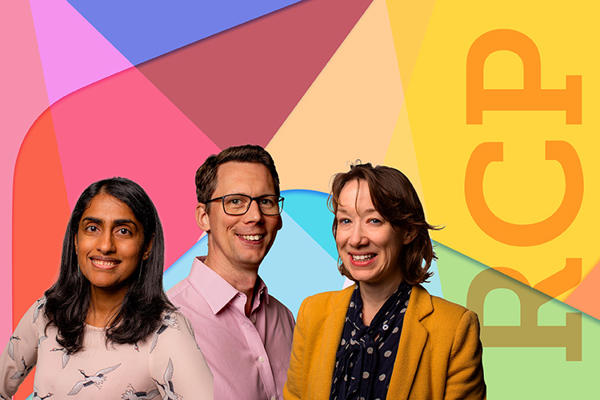The hospital has always been more than a place of diagnosis and treatment; it is also a crucible of learning and professional identity formation. From the first lessons in history-taking and examination to the challenges of breaking bad news and leading resuscitation, the hospital environment shapes not only what we know but who we become as doctors.
As an international medical graduate (IMG), I’ve seen hospitals with robust medical education, and hospitals where it is fragmented or barely exists – with direct implications for patient care.
Now, as a cardiology resident, medical educator and clinical researcher, I stand between two eras; the structured outcomes-based approach of today and the immersive apprenticeship model of the past. Both have strengths and limitations. The real challenge is how we integrate them and encourage intentionality in training.
To explore this, I spoke to two colleagues: Dr Aishwarya Viswanath, a current internal medicine resident at Northwick Park Hospital, London, and Dr Emma Vaux OBE, an experienced nephrologist and RCP global vice president, who graduated from Charing Cross and Westminster Medical School in 1993. The differing responses offer a vivid lens on how hospitals function as learning environments.
The learning environment
The differences between how teaching is today versus decades ago are stark. The accounts highlight the spectrum of training: structured timetables versus immersion. Both routes produced capable clinicians – which prompts the question of whether today’s reliance on structure risks crowding out the formative value of immersion.
Aishwarya said:
‘In my current hospital, regular clinical teaching happens in both formal and informal settings.
‘Formally, resident doctors have 1 hour each of acute and general medical lunchtime teaching every week which have been helpful for consolidating knowledge and applying it in clinical settings. There's also weekly rheumatology teaching and weekly grand rounds, which bring a multidisciplinary perspective on complex cases.
‘Informally, there’s an active internal medical training (IMT) group chat that’s used daily – people suggest useful procedures or patients for examinations. This peer-led aspect has been invaluable for real-time learning and opportunities. Acute consultants also occasionally provide a pearl of wisdom.
‘While there’s a good foundation of formal teaching, that informal network really helps embed learning into the everyday workflow. However, my current working climate is well-resourced; this level of formal teaching is definitely not standardised.’
Emma said:
‘When I started my clinical training, it was a very different world from the structured education programmes of today. Much of the learning was apprenticeship based. We spent long hours on the wards, often working as part of a small, tight-knit team, which created tremendous opportunities to learn simply by being immersed in clinical practice.
‘There was less formal teaching than now; much of our development came through observation, experience and the encouragement (or sometimes humiliation) of those around us. It was challenging – there was a steep learning curve, it could be scary and lonely at times, and we didn’t always have today’s support structures. But it fostered resilience, independence and a real sense of responsibility for our patients.
‘Procedural skills were often learned at the bedside, with a more experienced colleague demonstrating first and then supervising. There was a real sense of gradual, hands-on learning, but there was variability in quality. I shudder as I remember doing liver biopsies. Decision-making developed through exposure – seeing a wide range of patients and listening to how senior clinicians reasoned through difficult situations.
‘One of the great advances in medical education now is the structured approach that we have to skills training and assessment. Simulation, supervised practice and feedback provide safer, more consistent learning experiences. I think that balance – the richness of experiential learning combined with modern educational structure – is what we should strive for today. Structure should illuminate, not eclipse, the human texture of learning.’
Feedback
Feedback is often cited as the heart of good education. Aishwarya shared that today it’s typically informal – quick discussions during conversations about patients or when participating in teaching. ‘I find this highly useful as I can usually immediately apply it to my current patient.’
There is also structured feedback through acute assessment care tools and ePortfolio. Aishwarya says: ‘These can sometimes feel rushed or done retrospectively, which makes them a bit less impactful. I think the most useful feedback comes when there's time set aside to discuss things in detail – unfortunately, that doesn't happen as often as it should due to service pressures. Furthermore, not everyone has had formal training in providing feedback methods.’
Despite decades of educational reform, structured and formal feedback continues to be inconsistent. Aishwarya’s experiences echo Emma’s from decades earlier: ‘Feedback was rare and often informal – you were expected to learn by observing and doing, which meant gaps in skills or knowledge could easily go unnoticed … There was little structure or consistency. Much depended on the team you were placed with and the personalities of the consultants you worked alongside.’
Emma values the advances of structured feedback and simulation but warns against reducing feedback or training to checklists, reminding us that medicine is ultimately learnt through human complexity: ‘I would wholeheartedly adopt the focus on structured feedback and reflective practice. These are powerful tools for growth that we simply didn’t have in my early years.

‘If there’s one thing to guard against, it’s an over-reliance on checklists or tick-box assessments. While structure is essential, it should never replace the deep, messy, human experience of learning medicine through relationships and real-world complexity. We must always balance rigour with humanity.’
Dr Emma Vaux
RCP global vice president
Mentorship and the team
Both Emma and Aishwarya placed mentorship and the sense of belonging at the heart of development, whether encountered formally or serendipitously.
Aishwarya stated: ‘Formal mentorship is limited to the random allocation of educational and clinical supervisors ... it is a game of chance on whether you get on with them.
‘Most of my mentorship has come from informal mentors, who have been instrumental in my success today. That said, due to the structure of our rotations – there’s a high team turnover. This can make it difficult to build meaningful rapport or get consistent supervision.’
Emma shared the role senior physicians played in her professional development: ‘They were pivotal in shaping not only my clinical skills, but also my professional values. The consultants I admired most were those who took the time to explain their reasoning, involved us in their decision-making and demonstrated the importance of kindness, compassion and integrity in practice.
‘Mentorship wasn’t formalised how it often is now, but some individuals became role models by example – balanced by those whom I never wanted to emulate. Watching how the good ones approached complex clinical problems, dealt with uncertainty and spoke to patients and families left a lasting impression on me. Those experiences instilled a strong belief in the value of mentorship and the need for senior clinicians to actively nurture the next generation.’
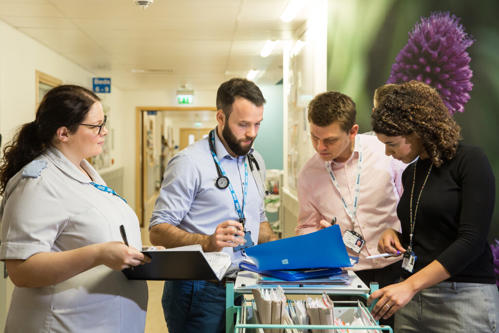
In contrast to Aishwarya’s account, Emma highlights the decisive role of continuity: disrupted today by rapid rotational training, but once fostered by stable, close-knit teams and paced rotations. ‘The real strength lay in the sense of belonging to a team. We worked closely with the same group of colleagues, which created continuity — not just for patient care, but for our own learning ... That continuity fostered strong relationships with patients and colleagues and gave you a real sense of professional identity early on.’
Continuity may be the invisible architecture upon which meaningful mentorship and sense of belonging rests, a much-needed sentiment in today’s NHS.
Culture and wellbeing
A positive culture and psychological safety are not optional extras, but the foundation upon which meaningful education is built. Within these different training approaches, do resident doctors feel safe and prepared to face challenges?
Aishwarya describes how psychological safety is vital for learning but can be contingent on local team dynamics: ‘The overall culture is supportive. There’s a genuine interest from many seniors in helping resident doctors learn and grow. It can sometimes depend on who the registrar or consultant is – some are more approachable than others. I’ve learned to gauge the environment and feel more comfortable speaking up as I’ve gained confidence.'
‘Psychological safety is essential for good learning. When the team is receptive and open, it makes it much easier to ask questions, admit gaps in knowledge and learn from mistakes.’
Dr Aishwarya Viswanath
Internal medicine resident
Emma also emphasises that learning can only flourish where fear is absent – which can be hard when working in a pressured health system. ‘Today’s resident doctors are working in a much more complex health system, with higher patient volumes ... There’s also an intensity of scrutiny, with every decision carefully documented and audited, which can feel overwhelming.
‘At the same time, resident doctors today have access to far more structured support – simulation, mentorship programmes, clear curricula and protected training time in many settings. The challenge is balancing those structures with the realities of service pressures.
‘There were fewer safeguards around working hours and wellbeing. While the intensity built resilience, it could sometimes come at a cost to both doctors and the patients we cared for. One of the lessons we’ve learned over the years is that quality training requires intentional design, not just good luck and who you may know.’
Similarly, Aishwarya’s comments highlighted that service pressures can eclipse learning: ‘That is likely the reality across the country. The patient load at my hospital is remarkably high … the pressure to keep up with patient flow can often overshadow learning opportunities. Similarly, the impending load of paperwork can directly impede our time in practice.
‘While the intention is to balance both, in practice, the service demands usually win. It can be difficult to step away to attend teaching sessions or clinics when you're aware that the team is stretched.’
Without better staffing and protected time, education risks being marginalised. Both Emma and Aishwarya agreed that training should be structured, patient centred and protected.
Emma also emphasises another culture change:

‘What strikes me most about this generation is their courage to speak up – about wellbeing, equity and patient safety. That’s something we didn’t always feel able to, or even know to we could, do. I find it incredibly inspiring.’
Dr Emma Vaux
RCP global vice president
Vision for the future
I asked both physicians to imagine the ideal learning hospital. Aishwarya emphasised the need for well-balanced protected teaching time and learning opportunities for all resident doctors – which need adequate staffing and rota coordination.
‘This shouldn’t just be a goal on paper, but something that is achievable. Continued learning and professional development is part of GMC good practice, and for good reason – our abilities as clinicians and providing quality care are directly related to our ability to learn and grow.’
Dr Aishwarya Viswanath
Internal medicine resident
She also emphasised that this needed to be a national, standardised approach: ‘No matter which trust or deanery you're in, everyone [should have] equitable access to high-quality academic teaching. Equity is a timetabled reality, not a policy statement.’
There was a sense of generational harmony in this as both physicians shared the same vision of training as an intentional, visible and valued core function of the hospital.
Emma also envisioned education woven seamlessly into daily practice: ‘It’s a culture where every patient interaction, every handover, every multidisciplinary meeting is seen as an opportunity to learn and teach and improve.’
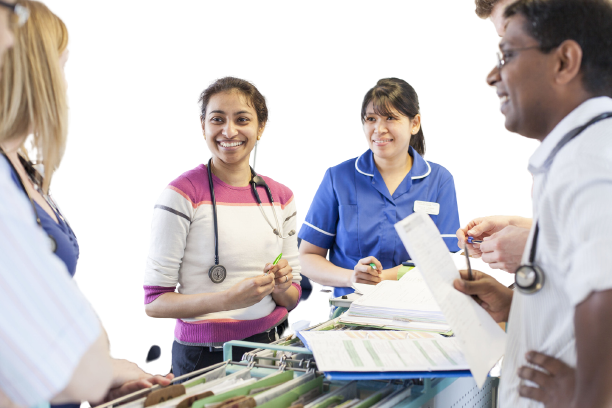
Emma offered the advice that she would give to her younger self, which can help guide learning and development for young doctors: ‘I would tell my younger self to be kind – to patients, to colleagues and to myself. Early in our careers, we can be our own harshest critics, and medicine is demanding enough without that internal pressure, and you will make mistakes. Hold onto your values to guide you through – mine are thoughtfulness, authenticity and integrity.
‘I would tell myself to embrace uncertainty rather than fear it. Early in our careers, we often think that good doctors always have the right answer – but the truth is, medicine is full of grey areas. It’s completely normal to feel unsure, and learning to navigate that uncertainty thoughtfully and safely is one of the most important skills you will ever develop. Stay curious, reflective and compassionate, and you will grow into the doctor you aspire to be.
‘I would remind myself that always going back to the patient reminds you why you are doing it all. And to find things that you love to do alongside the clinical work, as this will help you grow and keep you interested; finding the key ingredients that will sustain you in what is hopefully a long and fulfilling career.’
Reflection: between two worlds
As I listened, I found myself both grounded and unsettled. Aishwarya reminds us of the daily realities: high workloads, uneven teaching and the fragility of mentorship. Emma reminds us of the virtues of immersion, belonging and the art of navigating uncertainty. Together, they paint a picture of tension and opportunity.
As someone trained in the modern model but mentored by giants of the traditional one, I believe that hospitals can be reimagined as dynamic learning ecosystems, designed with intentionality to balance service and education, foster psychological safety and integrate both formal and informal spaces of learning.
The ongoing national debate on the quality of training suggests the need for fresh perspectives. If we were to approach hospitals as ecosystems, what dimensions would be essential to their design?
If we take seriously the idea of the hospital as a learning ecosystem, we must move deliberately away from a service-only mindset towards one where service and education are mutually reinforcing. Hospitals are not just workplaces. They are where future doctors are shaped, not only in skills and knowledge, but in values, resilience, and identity. If we are to honour this responsibility, we must move beyond the binaries of old versus new, service versus education, structure versus freedom.
Emma and Aishwarya shared five intentional habits for busy teams to start transforming your hospital learning environment that resonate with RCP resource Never too Busy to Learn:
- Open the ward round with roles and a learning aim.
- Cold-call kindly: each person asks one question, and any approaches (cold calls) are in a way that is respectful, empathetic and considerate to ecourage engagement.
- Close with ‘three learning points’ and ‘so what next?’.
- Offer micro-feedback in the corridor (60–90 seconds).
- Log one assessment linked to a real case within 24 hours.
We must invest in hospital learning ecosystems that integrate the strengths of both eras: the resilience of immersion with the safety of structure, the richness of human mentorship with the opportunities of digital innovation.

‘Ultimately, a great learning environment benefits everyone: resident doctors grow, teams thrive, and patients receive better, safer care. It’s a reminder that education is not separate from service delivery – it’s integral to delivering excellent care.’
Dr Emma Vaux
RCP global vice president
After all, we are fortunate to do what we do.


